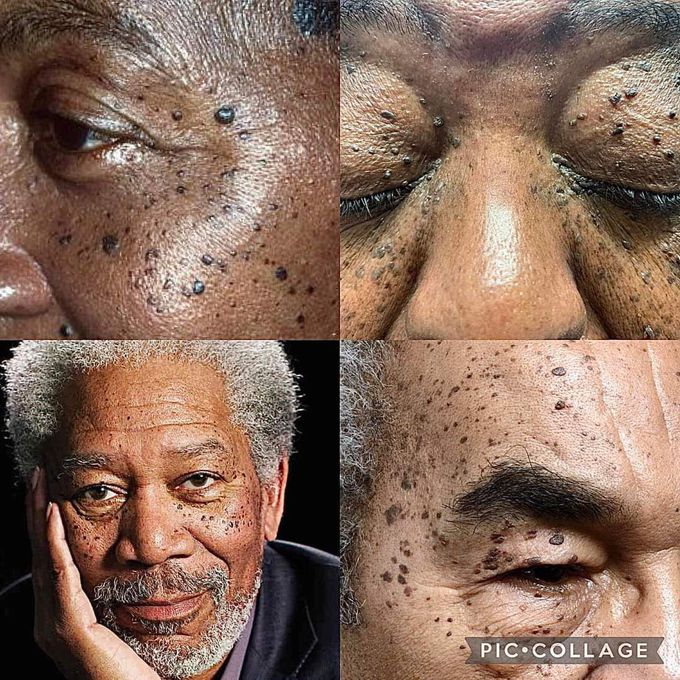
▂▃▄▅DPN ▅▄▃▂ ✅Answer:- ⚫️ #Dermatosis #papulosa #nigra is common in people with skin of colour, with #Fitzpatrick skin phototype {4, 5 or 6}. 🟤It affects up to 35% of #Black Americans. ⚫️Dermatosis papulosa nigra usually begins in adolescence. 🟤The incidence, number and size of lesions #increases with age. ⚫️The papules of dermatosis papulosa nigra are identical to small seborrhoeic keratoses. 🟤Dark coloured papules arise mainly on the #cheeks and forehead but they may also be found on the neck, upper back and chest. ⚫️Scaling, crusting and ulceration do #not occur. 🟤The papules are #symptomless but may be regarded as unsightly. ⚫️No tests are needed as dermatosis papulosa nigra is diagnosed #clinically. 🟤If there is any doubt a skin #biopsy can be taken. ⚫️🔬Histology shows a seborrhoeic keratosis with markedly increased #pigmentation of the basal layer of the epidermis. 🟤Dermatosis papulosa nigra lesions are generally best left untreated. ⚫️Complications of locally #destructive treatment can include increased and decreased pigmentation, scarring and keloid formation. 🟤Treatment #choices include:- curettage, #freezing with liquid nitrogen ✅(cryotherapy) ✅electrodessication followed by curettage. ✅Nd:YAG #laser has also recently been reported to achieve excellent cosmetic results. ⚫️ Treatment is kept #superficial to minimise the risk of #complications. 🌼🌸🌺🌼🌸




